DS+R, Rotor, Yona Friedman, and Clive Wilkinson among 2015 Blueprint Awards winners
By Bustler Editors|
Thursday, Nov 12, 2015
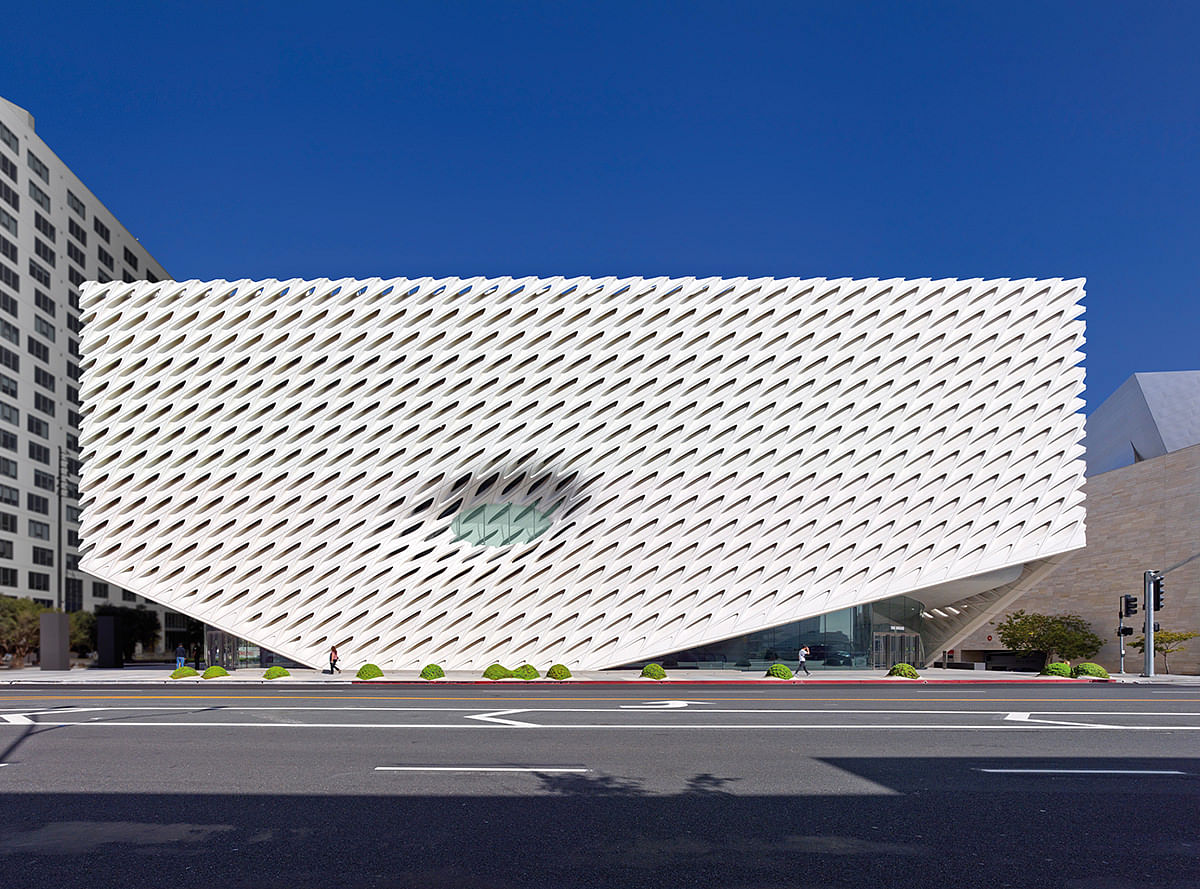
Related
Blueprint Magazine recently announced the winners of their 2015 Blueprint Awards, which highlights outstanding architectural work worldwide. The second edition attracted a fresh set of cream-of-the-crop designs from six continents, and 12 winners in different categories were announced during the Blueprint Awards evening ceremony in London.
The esteemed jury selected nine of the winners, while three were peer-nominated or voted on. The winners include Rotor for the 2015 Architecture Award, Clive Wilkinson Architects' interior work for The Barbarian Group, studiomk27's wildly successful Cultura Bookstore in Sao Paulo, and the DS+R-designed Broad museum that recently opened in Los Angeles.
Judges included Thomas Heatherwick, Chris Wilkinson of Wilkinson Eyre, and Rosario Hurtado and Roberto Feo of El Ultimo Grito, to name a few.
Get a glimpse of this year's winners right below.
Best Public Use Project - Privately Funded: Diller Scofidio+ Renfro, New York, US for The Broad, Los Angeles, US
"Diller Scofidio + Renfro's The Broad art gallery opened its doors to visitors in Downtown Los Angeles this September. The huge, white, $140m box houses artworks put together by eponymous philanthropists Eli and Edythe Broad, who own one of the USA's leading post-war private art collections...Internally, rather than being relegated to a back-of-house position, storage space for the 20,000-strong collection is sandwiched between the ground-floor entrance areas and the huge top-floor gallery. Three organically shaped routes guide visitors up to the brightly lit gallery space, offering brief glimpses of storage displays and art collecting at work on the way."
Blueprint Award for Critical Thinking 2015: Yona Friedman, Hungary
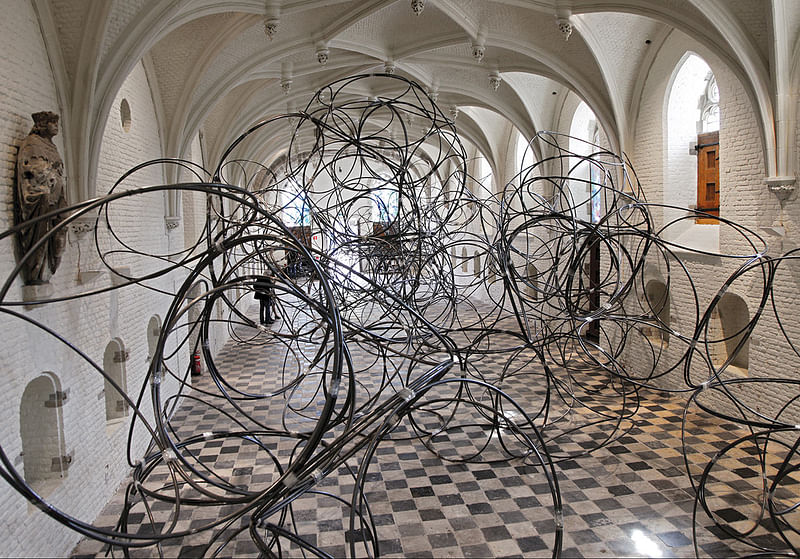
"Yona Friedman is a Hungarian-born French architect, urban planner and designer, who is still working and brimming with utopian ideas at the age of 92. The titles of past catalogues and publications reveal the consistent social ambition of his long and ongoing career: realisable utopias, alternative energy, architecture with the people, by the people, for the people. Born in Budapest in the early Twenties, Friedman's Jewish heritage meant that he was only able to study architecture with special permission. He joined the resistance during the Second World War, was imprisoned by the Gestapo and learned the value of 'an architecture of survival'...Since 1958 Friedman has published hundreds of papers and 35 books. For the past few decades he has been somewhat overlooked in architectural culture but has recently found a resurgence of interest from the art world. "
Blueprint Award for Design 2015: Konstantin Grcic, Germany
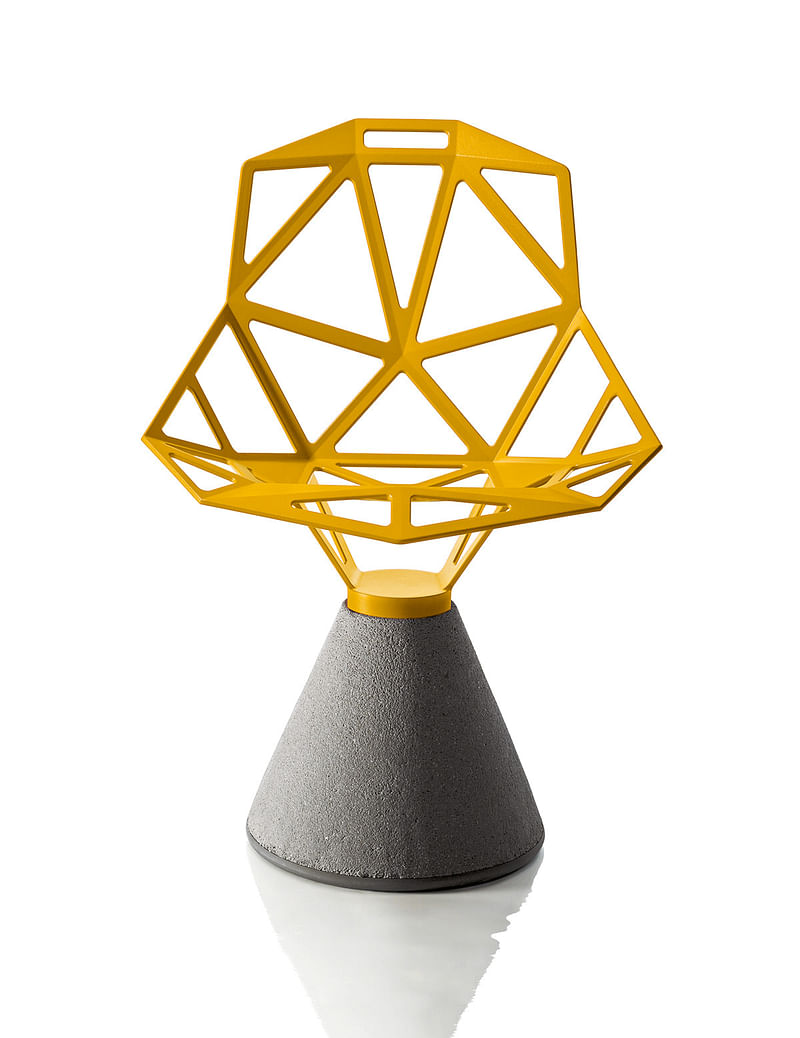
Konstantin Grcic trained as a cabinet maker at the John Makepeace School in Dorset before studying Design at the Royal College of Art in London. Since setting up his own practice Konstantin Grcic Industrial Design (KGID) in Munich in 1991, he has developed furniture, products and lighting for some of the leading companies in the design field...Grcic says he defines 'function in human terms, combining formal strictness with considerable mental acuity and humour'.
Blueprint Award for Architecture 2015: Rotor, Belgium

"Founded in 2005, Rotor is a collective of architects, designers and other professionals interested in material flows in industry and construction, particularly in relation to resources, waste, use and reuse...Rotor continues to realise interventions in existing architecture. A growing series of deconstruction projects by Rotor involves the dismantlement of building components in buildings slated for demolition, for reuse purposes."
Best Design Innovation Project or Product: Dean Skira for iGuzzini, Recanati, Italy for Trick light

"Trick is a highly adaptive light with a minimal design that can modulate light effects to turn surfaces into vast canvasses. It has a dual character, offering either light blade or surface skimming effects and radial or washer versions...When used to illuminate architecture, for example, the luminaire animates compositions with light beams that run parellel or cross over to highlight new planes. The radial or washer effect versions decorate vertical and horizontal surfaces with atmospheric and carefully monitored lighting effects."
Best Sustainable Project or Product: LYN Atelier, London, UK for Hub 67, London, UK
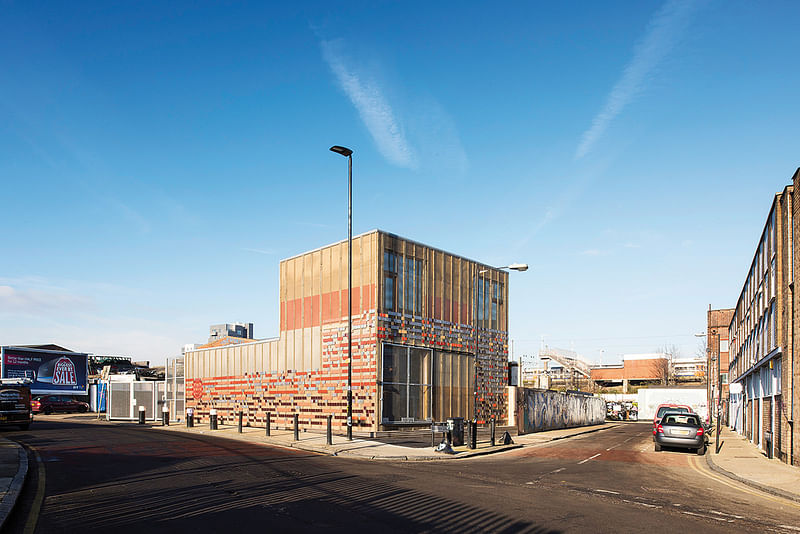
"Hub 67 is a temporary community centre in Hackney Wick, constructed with recycled material from the London 2012 Olympic and Paralympic Games. Following the games, the LLDF (previously the Olympic Delivery Authority) had a large collection of materials, from aquatic-centre seating and running tracks to steel frame cabins that were used in the Olympic Village. These cabins were reconfigured and joined together with additional internal steelwork to form the main structure of the community centre...LYN Atelier worked with the local community to design and build elements of the scheme.
Best Interior Design Project or Product — Leisure: Studio mk27, São Paulo, Brazil for Cultura Bookstore, São Paulo, Brazil
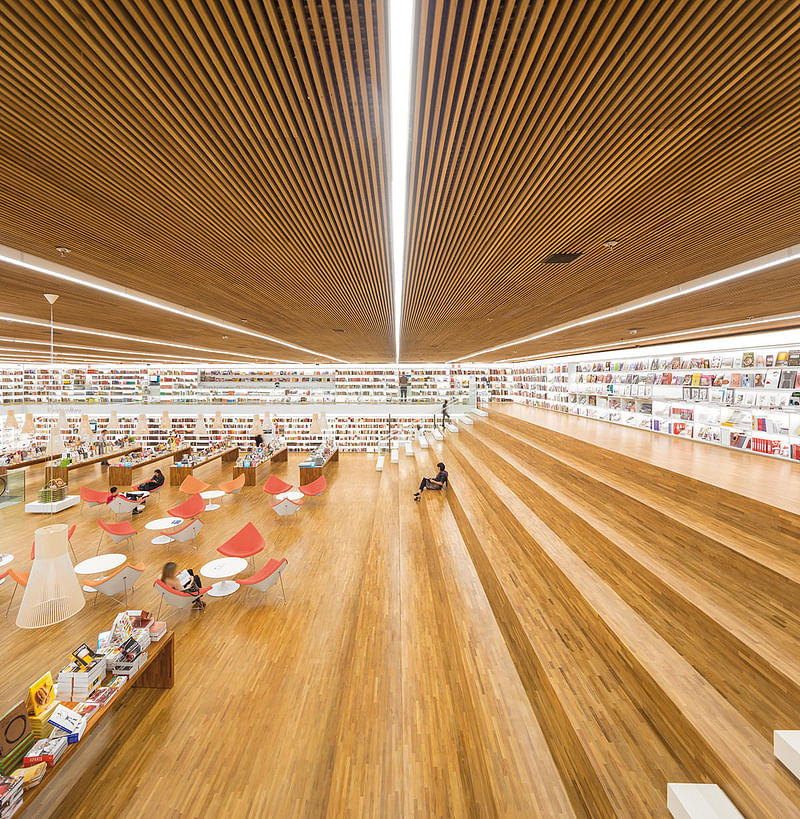
"Cultura Bookstore, situated in the Iguatemi shopping centre in the Jardins neighbourhood of São Paulo in Brazil, started with the premise, 'a bookstore with a meeting place'...Studio mk27 says: 'The architectural journey begins in a cosy space then arrives at a monumental area, where most of the products and visitors can interact with one another, where one can take a book and read a chapter even before purchasing it, where one can simply rest and watch the movement. We thought like this, with inviting and pleasant spaces that end up promoting a type of socialisation among people, these are the bookstores of the 21st century. The program is the very life of the store.'"
Best Interior Design Project or Product — Work: Clive Wilkinson Architects, Culver City, US for The Barbarian Group, New York, US

"Clive Wilkinson Architects adapted an existing 1,800 sq m office space in New York into a flexible space for The Barbarian Group, a company that creates consumer experiences for the digital world. With a tight budget, the architect recycled services for acoustically controlled spaces and transformed perimeter rooms to create a clear space in the center of the office."
Best Project by a Small Practice: Department of Architecture co., ltd, Bangkok, Thailand for The Flow, Saen Suk, Thailand
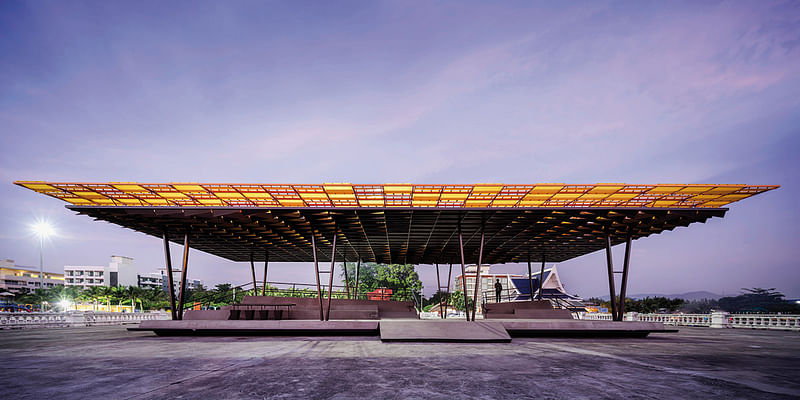
"The Flow by Department of Architecture co., ltd is a multipurpose pavilion for the community that sits on the waterfront of Saen Suk in the Chonburi Province of Thailand. The floor plate of the pavilion is folded like a piece of paper, forming different spatial configurations for various activities, all orientated towards the sea. People can sit on different tiers without blocking the people behind, with possible uses ranging from a small amphitheatre for miniconcerts and performances to a space for local meetings."
Best Non-Public Use Project — Residential: Studio Odile Decq, Paris, France for Saint-Ange Residency, Grenoble, France

"Saint-Ange Residency by Studio Odile Decq is the result of a competition run by French contemporary art collector Colette Tournier in 2013. The aim was to establish an artist residency on her medieval Tour St-Ange estate in Seyssins, near Grenoble, France...Odile Decq's Saint-Ange Residency sits on the lower side of the estate, on a steep slope overlooking Grenoble's golf course and the French town's valley beyond."
Best Non-Public Use Project — Commercial: CHROFI, Sydney, Australia for Lune de Sang, New South Wales, Australia
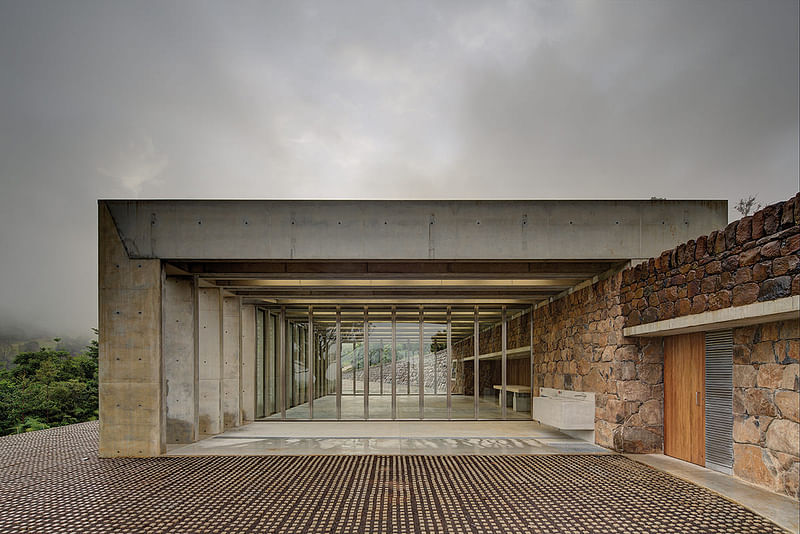
"Lune de Sang is an inter-generational venture that will see a former dairy farm in northern New South Wales transformed into a sustainably harvested forest. Rather than planting a fast growing crop, various bio-region hardwoods - with long lifespans of between 50 and 300 years - have been chosen to rehabilitate a rainforest landscape."
Best Public Use Project with Public Funding: Wolfgang Buttress, Nottingham, UK for UK Pavilion at Milan Expo 2015, Milan, Italy
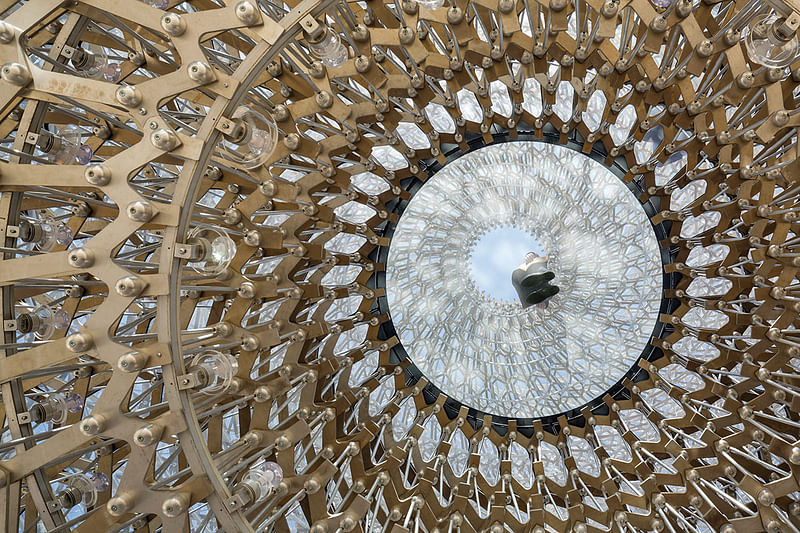
"For the UK's contribution to this year's World Expo in Milan, Nottingham-based artist Wolfgang Buttress created a multimedia Hive dedicated to the plight of the honeybee. A third of our national food supply depends on this unsung hero's pollination, tying in with the overall Expo theme of 'Feeding the Planet, Energy for Life'. Visitors to the pavilion map the journey of the bee, meandering through an orchard and along a 40m-long meadow of wild flowers (landscaped by BDP) before entering a sculptural, honeycomb inspired lattice. A 9-metre spherical void is hollowed from the centre, allowing visitors to peer up at the extraordinary lattice above, made of 32 layers and 115,000 aluminium components."

Share
0 Comments
Comment as :